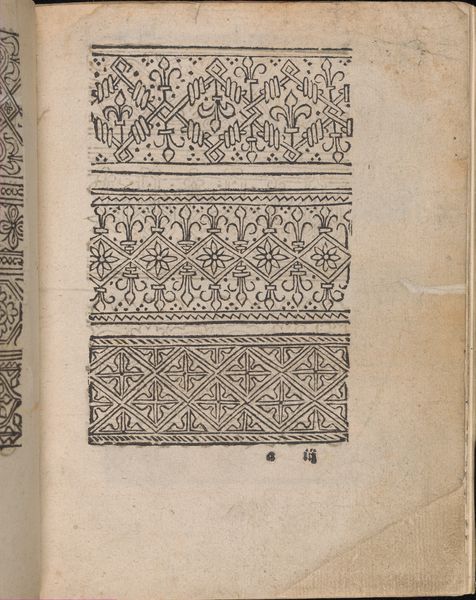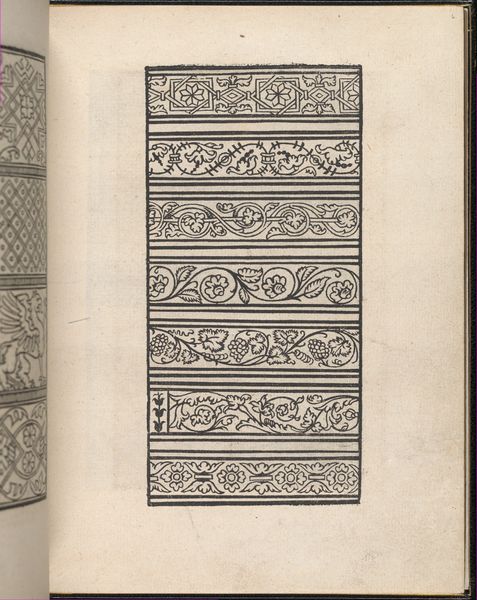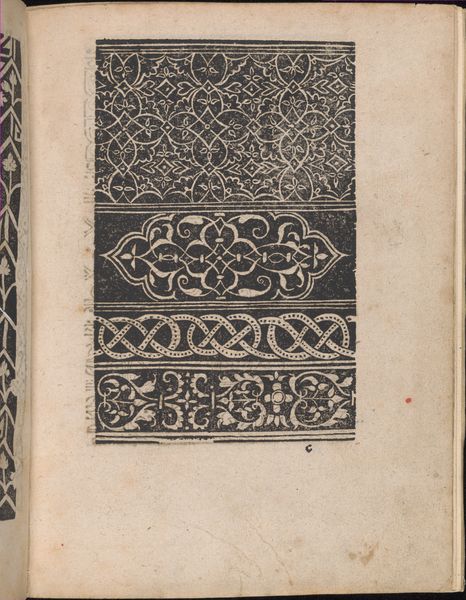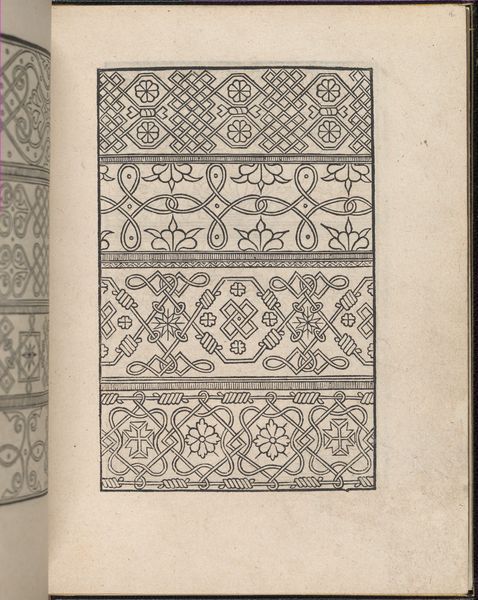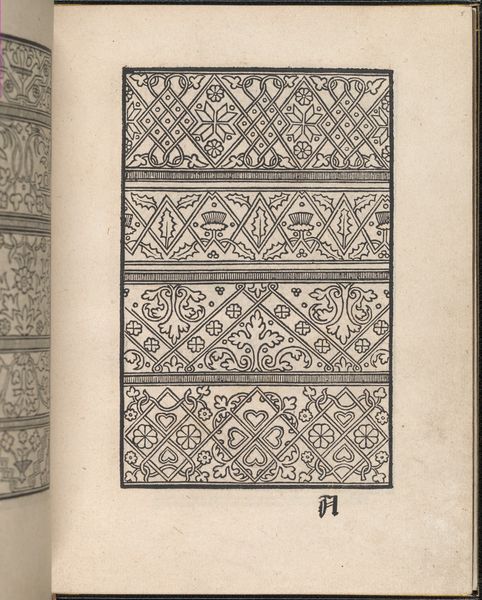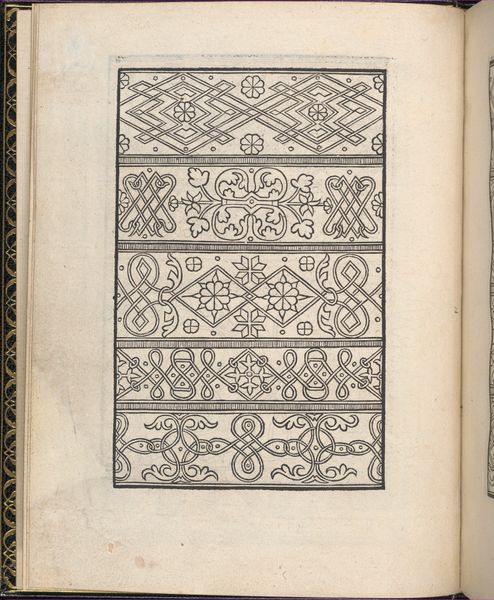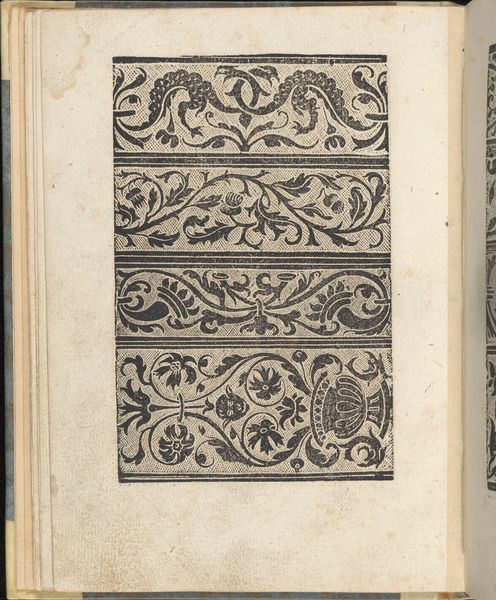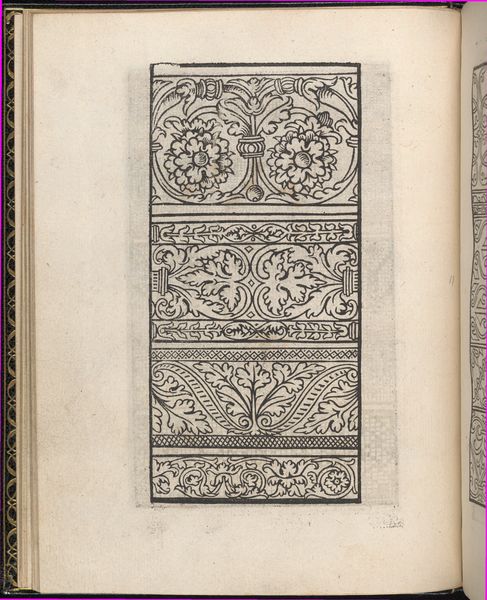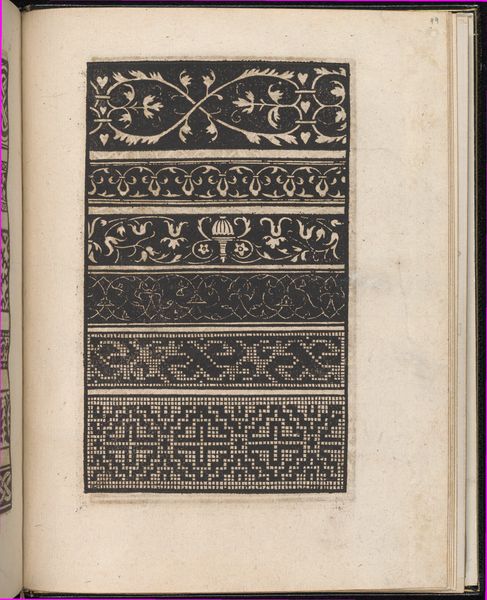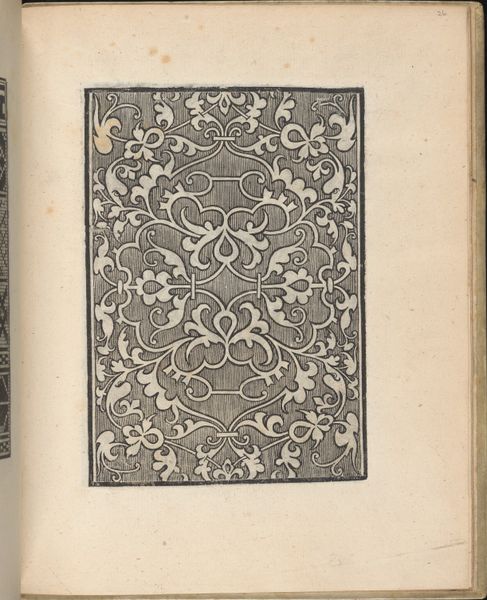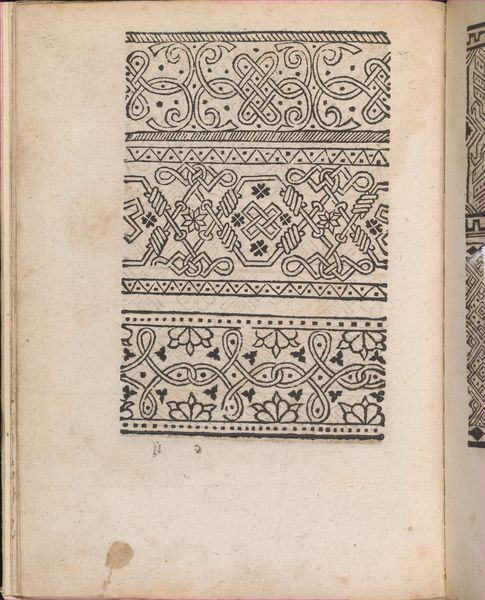
Page from Ein new kunstlich Modelbuch...(Page 4v) 1544
0:00
0:00
drawing, graphic-art, print, woodcut
#
drawing
#
graphic-art
# print
#
11_renaissance
#
geometric
#
woodcut
Dimensions: Overall: 7 11/16 x 5 7/8 in. (19.5 x 15 cm)
Copyright: Public Domain
Curator: This page is from "Ein new kunstlich Modelbuch..." or "A new book of artistic patterns" created in 1544 by Peter Quentel. It's a woodcut print, residing now at the Metropolitan Museum of Art. What are your first thoughts on it? Editor: Striking! It's primarily ornamental; a compilation of varied patterns reminds me a bit of textiles, like intricate woven borders intended to separate and decorate planes. Curator: Absolutely. These books served a practical purpose, circulating widely to equip artisans and craftspeople with design motifs. Consider the socio-economic implications: widespread pattern dissemination democratizing aesthetics, allowing broader populations access to 'high-art' designs. Editor: That's right, thinking of this from the vantage point of class and access provides context for how these were being utilized and who controlled them. What impact do you think printing had on visual art at that time? Curator: Profound, it enabled reproducible images. Ideas could move quickly across geographical spaces and social strata, fueling innovation in craft traditions like embroidery and tapestry. Notice how the style seems both organic and rigid—floral motifs alongside rigid geometric frameworks. These were the seeds of a design language. Editor: It speaks to how art has long functioned beyond the gallery. It reflects evolving systems of labor, material production, and economic exchange. It asks to reconsider "fine art," interrogating that distinction and making room for other contributions. Curator: A call to look beyond traditional hierarchies, absolutely! And the existence and preservation of such design guides opens pathways to accessing Renaissance craftsmanship and design. I'm endlessly fascinated by the role such volumes played. Editor: Yes, I find that these visual sources, even in their apparent simplicity, offer us a vivid lens onto their era and hopefully challenge contemporary elitism in creative sectors.
Comments
No comments
Be the first to comment and join the conversation on the ultimate creative platform.
